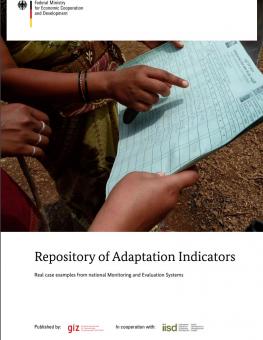
Repository of Adaptation Indicators: Real case examples from national Monitoring and Evaluation Systems
The repository illustrates possible adaptation indicators and their application context, thereby supporting their context-specific formulation.
The repository illustrates possible adaptation indicators and their application context, thereby supporting their context-specific formulation.
It systematically presents various indicators for four focus areas:
- climate parameters
- climate change impacts
- adaptation actions
- adaptation results
The examples have been selected from currently proposed national adaptation M&E systems (i.e., they reflect the first generation of indicators). Each indicator has its adaptation relevance, limitations, data needs and sources described. The repository is meant to illustrate possible indicators—their applicability to other contexts needs to be assessed on a case-by-case basis. It is an output of the study on “Monitoring and Evaluating Adaptation at Aggregated Levels: A comparative analysis of ten systems.”
For more information, visit the Adaptation Community website.
Participating experts
You might also be interested in
COP 29 Outcome Moves Needle on Finance
In the last hours of negotiations, concerted pressure from the most vulnerable developing countries resulted in an improved outcome on the finance target, with a decision to set a goal of at least USD 300 billion per year by 2035 for developing countries to advance their climate action.
What Is the NAP Assessment at COP 29, and Why Does It Matter?
At the 29th UN Climate Change Conference (COP 29) in Baku, countries will assess their progress in formulating and implementing their National Adaptation Plans. IISD’s adaptation experts Orville Grey and Jeffrey Qi explain what that means, and what’s at stake.
IISD Annual Report 2023–2024
While IISD's reputation as a convenor, a trusted thought leader, and a go-to source on key issues within the sustainable development field is stronger than ever, the work happening outside the spotlight is just as valuable.
Effectively Delivering on Climate and Nature: NDCs, NAPs and NBSAPs Synergies
This checklist for national policy-makers illustrates potential opportunities and interactions during the development or update of the nationally determined contribution (NDC), National Adaptation Plan (NAP), and national biodiversity strategies and action plan (NBSAP).